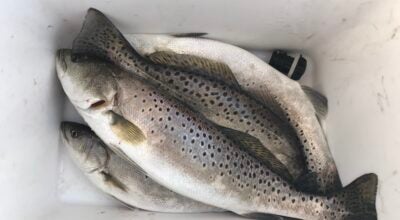Study shows past water violations
Published 7:54 pm Wednesday, June 29, 2016

- Three violations were detected in two water systems in Beaufort County from 2006-2016. However, the violations were deemed minor.
A study has revealed three past drinking water violations in Beaufort County.
Contaminants were found in water supplies in Aurora and Whitley’s Mobile Home Park, after a recent Beaufort County Community Health Assessment was conducted through East Carolina University’s Center for Survey Research. North Carolina requires each county to undergo assessments periodically, and Beaufort County Public Health Department commissioned the center to aid in the assessment on a consultant basis, according to Stacey Harris, supervisor for environmental health at Beaufort County Public Health Department.
The violations, which are considered minor, were recorded between 2006 and 2016. According to the Environmental Protection Agency, a health-based violation occurs when a contaminant exceeds safety standards or water was not treated properly.
In Aurora, which serves a population of 550, two violations of trihalomethanes above the maximum contaminant level (MCL) set by the EPA occurred in the town’s water supply Oct. 18, 2013. In Whitley’s Mobile Home Park, which has its own water system and serves a population of 270, coliform above the MCL was found on Oct. 19, 2006.
The contaminants found in Aurora are common and a byproduct of a disinfection process using chlorine to treat water supplies, according to Dyk Luben, regional engineer in the Washington office for the Division of Water Resources Public Water Supply Section.
“Those are regulated contaminants,” Luben said. “They are byproducts caused by using chlorine to disinfect water, and the chlorine reacts with organics in the water and create these byproducts. They exist in our water. (The violation) was just in levels that exceed the maximum contaminant levels. The EPA sets these standards based on what is predicted to become a health risk.”
Contaminants found in Whitley’s water supply are not unusual, either, according to Luben. Though coliform is not harmful, it can be a good indicator that something in the water supply is harmful. However, in this case, there was nothing harmful detected, Luben said.
“Once you get a positive, you’re required to do repeat (testing),” Luben said. “Oftentimes, the repeats will be negative. The problem with coliform samples, a false positive is not unusual. They’re present in the atmosphere. When they collect samples, it’s not unusual to get a positive. It just accidently gives you a false positive, but you still have to act with the possibility there could be a problem with the water system.”
Luben said results from follow-up testing came back negative.
“He did five more samples, and they all came back negative,” Luben said. “It’s possible it was a false negative. It’s hard to know. It could’ve been a disruption in the system for some reason. We don’t really know, but the facts are the positives he did see are only positive for total coliform. Had it been a fecal positive, it would’ve been much more alarming and required immediate action. With just a total coliform positive, they’re not truly an indicator of a risk.”
Luben said the state has done a great job in providing information related to water quality to the public. The public can access detailed information and test results on every one of the 6,000 regulated water systems in the state, according to Luben. Public water systems are those which provide piped drinking water to at least 15 connections or 25 or more people 60 or more days per year, according to the N.C. Department of Environmental Quality website.
“It’s very transparent as far as water quality issues,” Luben said.
For more information about water quality in county water systems, visit ncwater.org or call the North Carolina Department of Environment and Natural Resources Division of Water Resources Public Water Supply Section in Washington at 252-946-6481 or visit www.epa.gov/enviro/facts/sdwis/search.html.





